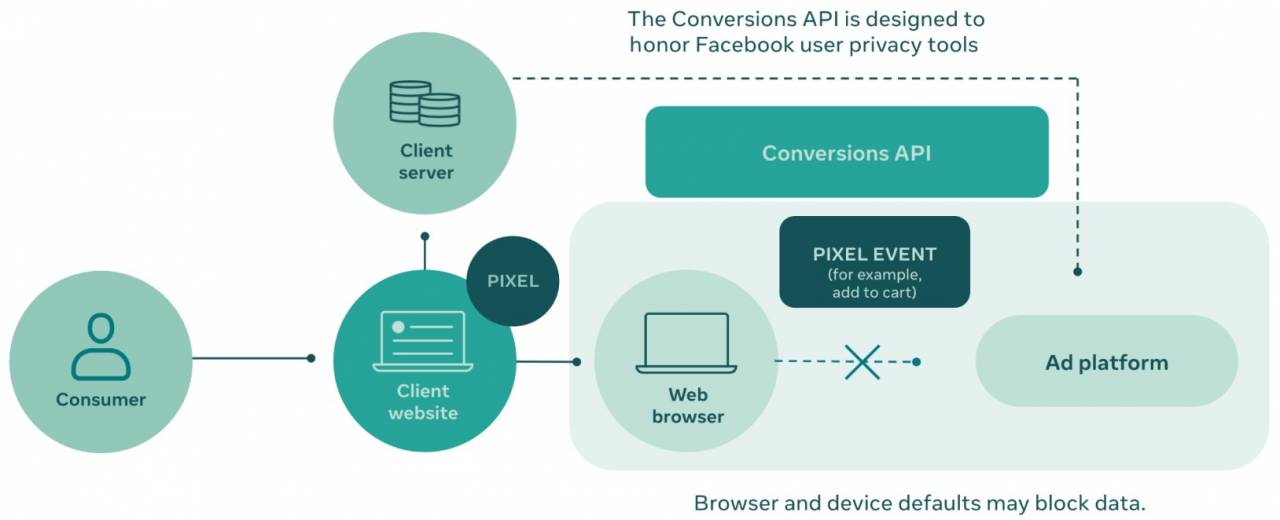Conversions API: What is it and why should you care?
The days of conversions tracking is shifting fast and this is another important element that technical & non-technical audiences should know about.
We’ve previously written about how cookies and tracking defined the last 5 years of digital marketing and how that’s about to change. Consider this a follow-up as we’ve come across an important bridge to cross at this moment.
The Pixel and The Conversions API
If you’ve seriously advertised with Facebook Ads, then you are probably aware of the term “Facebook Pixel”. In short, it’s a piece of code that you or your web developer adds to your website so that Facebook Meta has access to monitor the traffic on your site and thus “know” when someone completed an action important to your marketing efforts, aka a “conversion”.
With the latest changes to the industry from legislators and other players such as Apple and soon Chrome browser, those tracking capabilities are about to be limited greatly. Meta’s remedy for this is introducing a new direct method to report data and conversions and that’s through Conversions API also known as CAPI.

The above graph, taken from a Meta Blueprint training handout clarifies how CAPI communicates with the Ad Platform directly via your server and bypasses the web browser or any limitation that might present itself from the client’s side. Thus protecting you from any future limitations imposed by any other player.
There are multiple ways of integrating this, even alongside the Pixel for redundant and more accurate setup. However, we want to keep this top-level to explain this concept. If you would like to know more, we invite you to read more on Meta’s documentation here.
Why is this important to your business?
Let’s go back to the basics. Why do you care about tracking the performance of your advertising?
Assume you spent $1,000 on Facebook Ads in one month to promote two products, A & B, and at the end of the month you got 50 purchases. This could be happy news. If we add to this and tell you that 40 of those purchases came from Facebook Ads, 30 from product A promotion and 10 from product B and the remaining 10 purchases came through word-of-mouth. We bet this is now more interesting for you.
Not only do you know the effect of your $1,000 ad spend but you also know the appeal of product A vs B and thus can allocate more money towards a better advertising campaign next time.
So in essence this information is what is at stake when the tracking capabilities of digital efforts are limited for businesses. As marketers, we would have less data to follow on and thus be operating in the dark. CAPI is Meta’s response to this so that we continue to be able to better optimize ads and continue to use their platforms.
Takeaway: this is a crucial topic to discuss with your developers & marketers in 2022
Simply put your business cannot afford to spend in the dark and you need to make sure this is being implemented sooner than later or at least discussed. It can be simple or complex based on your website’s infrastructure and platform of choice.
Get in touch if you have additional questions.